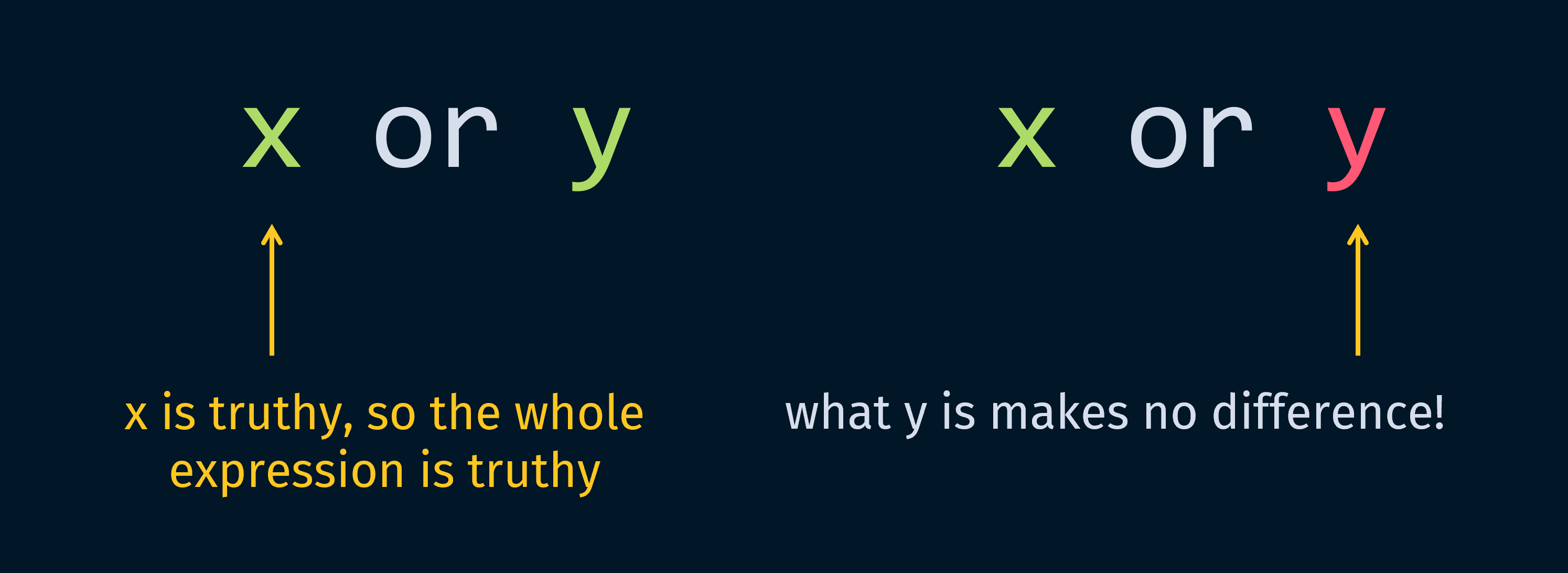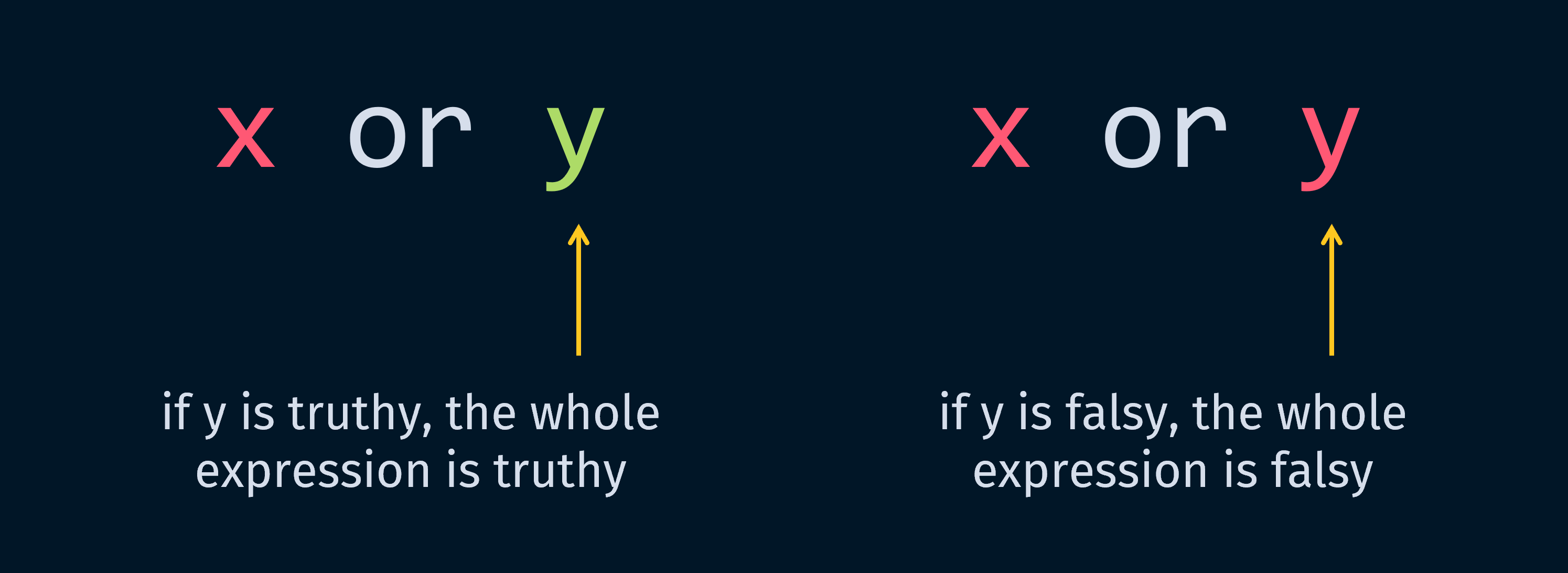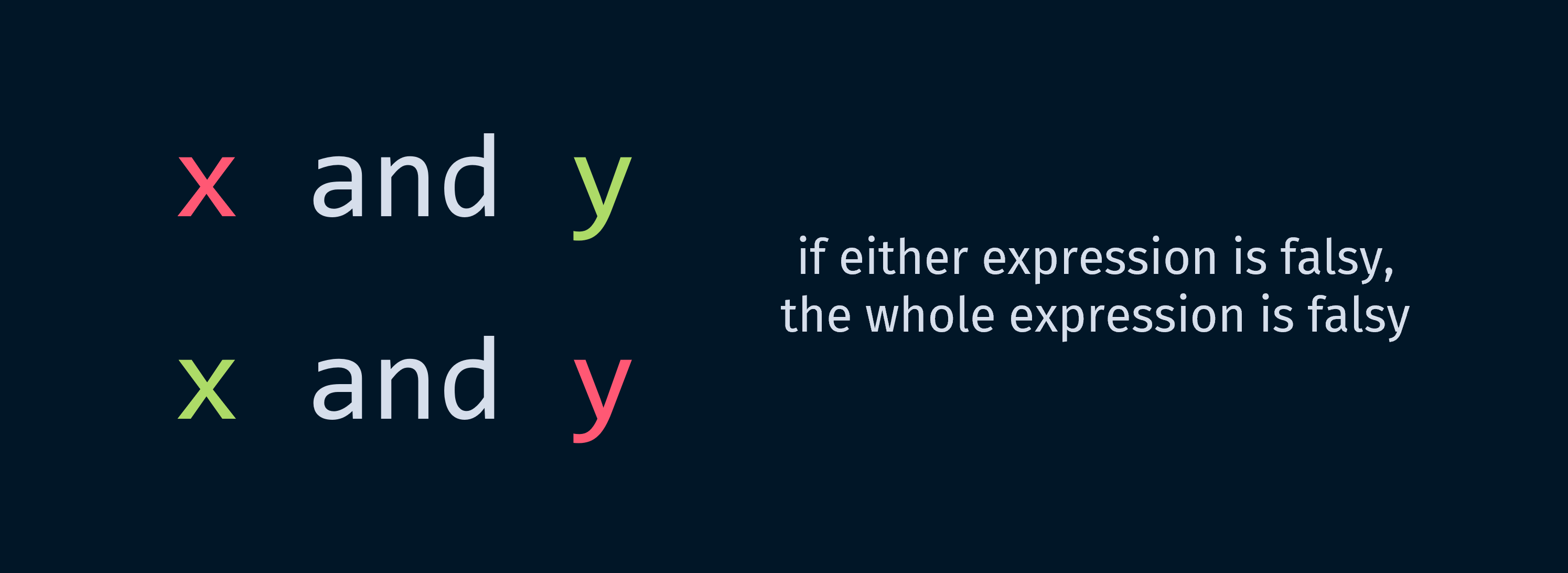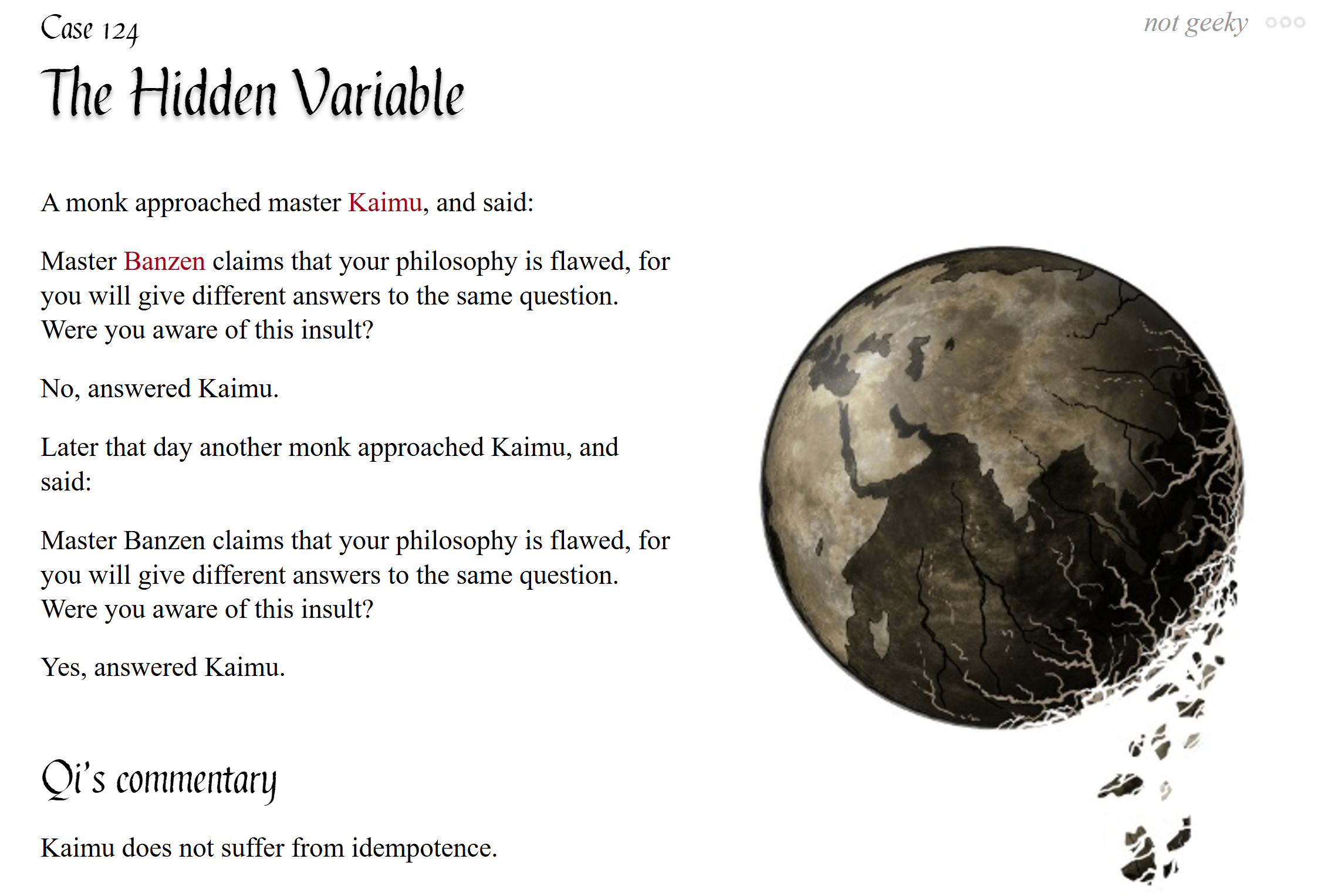Computers will do exactly what you tell them to do, not what you want them to do.
Hey pips!
We looked at truthiness last week, which was a bit of a wacky concept. Today, I’m going to shatter how you understand or and and.
It’s pretty self explanatory that if x and y only executes if x and y are true – or truthy, as we now know – and if x or y will execute if either (or both) are truthy.
Let’s try storing one of these expressions in a variable, and see what happens.
>>> win = 0 or 6
>>> if win:
>>> print("yay")
yayRemember that 6 is considered truthy, which means the print() nested inside if does run. What’s actually the value of win though?
>>> win
6Huh? Not True?
Contrary to what you may have been led to believe, or and and are not like == and <, which output True or False. Actually, they return 1 of the 2 expressions they’re given!
So here, we really have:
>>> if 6:
print("yay")
yayBut how do we know which expression is returned?
Let’s think about how an OR statement works. In x or y, if we know 1 of x or y is truthy, then we immediately know the whole expression must be truthy.
Python will look at x first. If it’s truthy, then it doesn’t matter what y is – no matter what, the whole expression is truthy.

So Python returns x from the expression:
>>> 3 or 4
3
>>> "life" or None
'life'
>>> [0, 1, 2] or [3, 4, 5]
[0, 1, 2]But if x is falsy, then we do need to look at the truthiness of y. In fact, the truthiness of the whole expression is now determined by y – if it’s falsy, the expression is falsy; if it’s truthy, the expression is truthy.

So in this case, Python returns y from the expression:
>>> None or 2.0
2.0
>>> False or ""
''
>>> [] or [9, 9, 6]
[9, 9, 6]And guess what, this is actually just a ternary conditional!
# this conditional...
x if x else y
# is identical to:
x or yNow let’s look at and. Can guess how it works?
x and y is only truthy if both x and y are truthy. So (contrapositively 🔥) if either x or y is falsy, then the whole expression must be false.

Once again, we’ll look at the expressions from left to right. If Python comes across x and sees that it’s falsy, then it knows the whole expression is falsy. So it returns x:
>>> 0 and 5
0
>>> None and "link"
None
>>> {} and {"state": "pondering"}
{}But if x is truthy, then like before, the truthiness of the whole expression now rests on the metaphorical shoulders of y – if it’s truthy, the expression is truthy, if it’s falsy, the expression is falsy.
So in this case, Python returns y:
>>> "project" and "sekai"
'sekai'
>>> True and 3
3
>>> [-1, 1] and []
[]It takes a little more time to get comfortable with using or and and in this way, but you’ll find some neat situations where they come in quite handy!
Further Reading
- Boolean algebra – Wikipedia↗
Challenge
You’re given 2 objects, py and co. 1 of them is truthy, 1 is falsy. Can you write an expression to print the truthy one first, followed by the falsy one?
>>> py = "aleph"
>>> co = 0
>>> (your_expression)
aleph
0